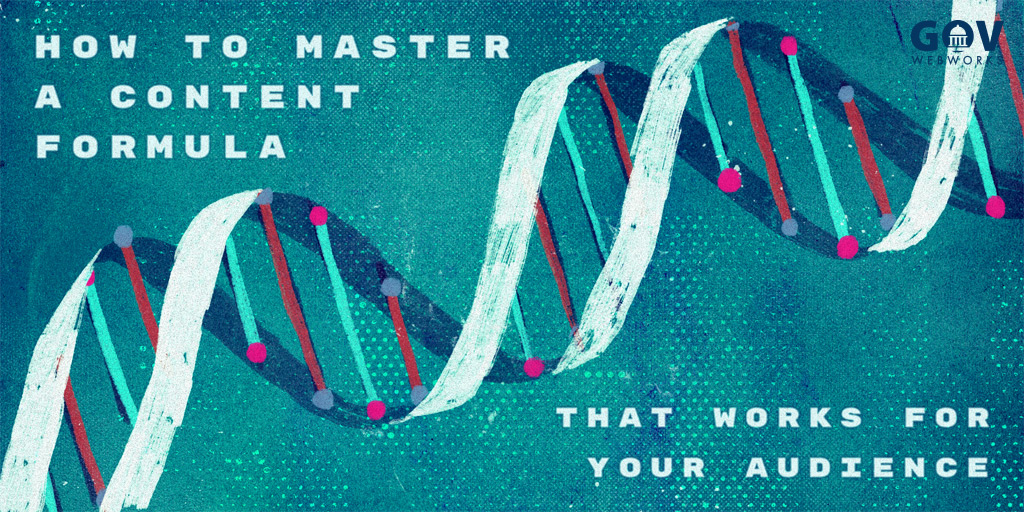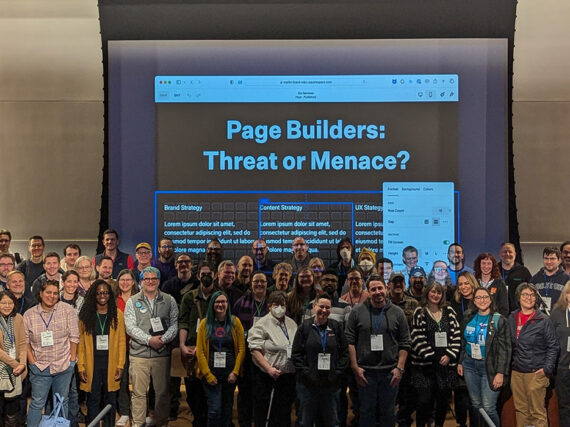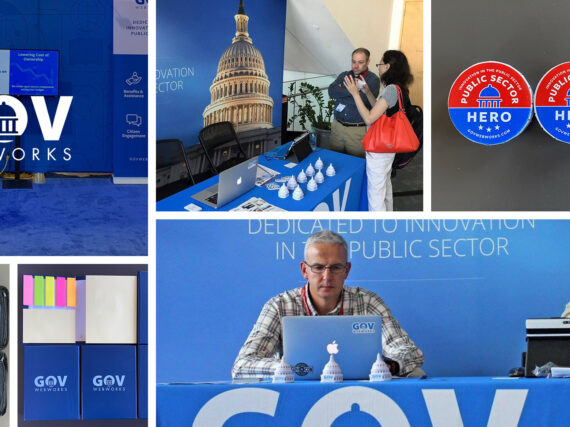In the ongoing effort to provide quality online content, and help our clients do the same, we came across a useful ebook produced by LinkedIn and BuzzSumo. “The DNA Behind the World’s Most Successful Content” outlines five key components of the most shared content.
We thought we’d follow suit and share a Cliffs Notes version of the findings here, along with some examples from GovTech to reflect the public sector.
Data from 400,000 posts
By analyzing data from 400,000 posts on major social media networks, the LinkedIn/BuzzSumo study located the 40,000 most shared posts for 10 different industries. Shares, they claim, are “an important indicator of engagement levels.” They also factored in backlinks, the number of times a post is linked to from another web page.
While the study acknowledges that shares can be considered a vanity metric, they “also increase the reach of content … and the impact of this shouldn’t be underestimated. At LinkedIn we found that just over 4,000 shares of content by employees could add over 10 million in reach. That’s a pretty impressive multiplier.”
Looking at the five main elements (topic, type of post, format, length, and headline) of the 40,000 most popular posts, they were able to better understand the most successful factors for each element.
Five key elements of the most shared posts
The following five elements stood out for us as a useful outline to follow when composing an article. We’ve also located the most shared posts for 2017 from GovTech. They provide insight into the topics, types of posts, format, length, and headlines that work best for government.
1) Topic
“Hot topics, by their very nature, change over time. However, it’s interesting that particular audiences tend to gravitate consistently towards particular types of subjects.”
As evidenced below, the most shared posts on GovTech vary with the news, but consistently reflect topics including security, data, and artificial intelligence.
Most shared posts on LinkedIn from GovTech in 2017:
- Report: North Carolina Ranks No. 1 for IT Jobs: 1.3k shares
- The Top 17 Security Predictions for 2017: 820 shares
- Cybersecurity Has a Metrics Problem – Here’s What You Can Do About It: 752 shares
- Ohio Lays Out Plans for Data Analytics: 713 shares
- Analytics, AI and Orchestration are Top New Security Topics: 662 shares
Most shared posts on Twitter from GovTech in 2017:
- Analytics, AI and Orchestration are Top New Security Topics: 503 shares
- CES 2017: As with Big Data, Human Factor Plays a Part in IoT: 323 Shares
- The Insider Threat: New Report Highlights Problems, Recommendations and Resources: 284 Shares
- How Secure Is Our Smart Grid?: 239 Shares
- 5 Ways Artificial Intelligence Is Already Changing Government: 225 Shares
2) Type of post
“Aligning your treatment of a topic with the needs that motivate your readers is a vital element in content planning.”
The most popular types of posts at GovTech (Disaster, Perspectives, and Police Force) are reflected in the top five most viewed pages.
Most popular types of posts (by page view) on GovTech for 2017:
- ‘The Worst is Not Yet Over for Southeast Texas,’ Governor Declares: Disaster
- Corpus Christi, Texas, Eerily Quiet as Storm Set to Roar: Disaster
- The Top 17 Security Predictions for 2017: Perspective
- How Transportation Technologies Will Change Everything: Transportation
- How Social Media Is Changing Law Enforcement: Police Force
Most popular types of posts from study:
- Practical advice
- Trends
- Predictions for the future
3) Format
“A format that attracts some audiences by offering accessible and actionable content leaves other audiences with the impression that content lacks depth, detail and currency.”
Most shared formats (see #1 above) from GovTech:
- News
- Reports
- Top 10 lists
- How to
Most shared formats from study (for technology audience):
- Guides
- How to
- Posts with ‘Tips’ in the title
- Infographics
4) Length
“A few years ago, the received wisdom was that online copy should be no longer than 650 words – and that anything more would try the patience of an action-oriented, forward-leaning, digital media audience. Our research finds conclusively that this is not the case – in fact, the opposite is true.”
Length of top 10 most shared articles (see #1 above) from GovTech in 2017:
- 1,000 to 2,000 words: 4 articles
- Less than 1,000 words: 6 articles
Average shares by length from study:
- 1,000 to 2,000 words: 485 average shares
- Less than 1,000 words: 348 average shares
5) Headline
“The most effective headlines use particularly resonant power phrases that audiences respond to almost automatically. Combining these phrases with clear signals of the topic and type of content can drive strong engagement and sharing.”
Phrases from headlines of most shared articles (see #1 above) on GovTech for 2017:
- # ways X is
- top # predictions
- what you can do about it
Top phrases for headlines from LinkedIn shares:
- is the new
- the year of
- in the workplace
Top phrases for headlines from B2B shares:
- will make you
- this is why
- can we guess
Plan of action
The following steps are suggested by LinkedIn and BuzzSumo as a viable plan of action for putting these five keys into play.
- Draw up a target list of topics
- Ensure your content mix is delivering against all of your objectives
- Approach your target list of topics through a range of content types
- Match formats to your audience needs, and be ready to experiment
- Mix up your length
- Grasp the headline opportunity
- Amplify your content on the most relevant social platforms
Disclaimer
Reminder: the info above is helpful, but the beauty of content is that, in the end, there is no magical formula. In “How to avoid a common content strategy pitfall” from the GatherContent blog, author Melissa Hodai identifies something called the content unicorn.
“I define a ‘unicorn’ as that elusive, nearly mythical, piece of content that breaks through the din of all the countless, attention-clamoring posts shouting for attention and enjoys a shining, if fleeting, moment in the sun.”
“But, the problem with a ‘unicorn’ is its sheer unpredictability – and therein lies the problem in shaping a content strategy around the hunt.”
“Chasing that next high page view mark, trying unsuccessfully to replicate a metrics-busting fluke, can become a time-sucking, relentlessly discouraging slog. This mission can become so all-encompassing, in fact, that it may even seem like it’s a strategy.”
See her post to learn the strategy she offers to avoid unicorn chasing. In a nutshell:
“Find your “why”, create a plan for the “how” and stick to it. You can adjust your “how” based on your learnings from unicorns and failures – and even your “why” if your business needs demand it – but stay the course. The “why” is the cornerstone of your content strategy, and if you keep your eye on it, it can keep you on a course for success.”
Learn more
- Download “The DNA Behind the World’s Most Successful Content” from LinkedIn
- Search BuzzSumo for the most shared content by search topic
- Read “How to avoid a common content strategy pitfall“
- Visit GovTech for the latest government IT news
- Contact us with any questions about how our team can lend a hand







